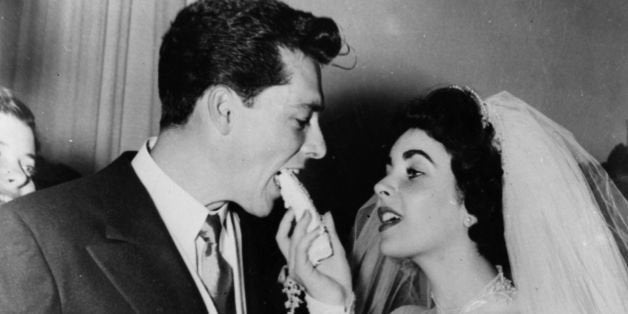
Good news for romantics: The divorce rate may be dismal, but remarriage is on the rise. According to new findings from the Pew Research center, 40 percent of marriages involve one spouse who's been married before. In 20 percent of new marriages, both spouses have previously said "I do."
"There's so much dialogue right now about the retreat from marriage in general," Gretchen Livingston, Senior Researcher at Pew and author of the study, told The Huffington Post. "I was really curious to juxtapose that with what's going on with remarriage."
Livingston analyzed data from the 2013 American Community Survey as well as the 1960 and 1980 censuses and found that the number of remarried adults in the US has hit 42 million, which is almost double the amount recorded in 1980 and triple the amount in 1960. But not everyone is jumping to remarry -- after combining the hard data on remarriage patterns with the results of a recent Pew survey about marriage, Livingston found that specific demographics are actually less likely to remarry than others.
Among those who are divorced or widowed, age made a big difference in desire to remarry.
There are two demographic shifts that can account for this general surge in remarriage, according to Livingston. For one, the divorce rate is higher now than it was in 1960, so the number of people who are, as she put it, "eligible" to remarry has also risen. (But it's worth noting that the divorce rate peaked in 1981 and has been slowly declining and leveling off ever since.)
The more influential factor in the high remarriage rate, however, is a longer life expectancy for partners, particularly among baby boomers. While only 34 percent of those who were 65 and older (and eligible to remarry) had remarried in 1960, 50 percent of that same demographic had remarried in 2013.
"The older you are, the more likely you are to have ever remarried, because you have more time in your life to have married once, gotten divorced or widowed and found someone else and remarried," Livingston said.
Younger Americans went the opposite direction: 75 percent of people ages 25 to 34 and eligible to remarry were remarried in 1960, while only 43 percent of that same demographic were remarried in 2013. It's very possible that this younger group of contemporary divorcees and widows hasn't soured on the institution of marriage completely, however. Livingston pointed out that, since younger demographics have tended to delay marriage -- the average age of first marriage is now is about 27 for women and 29 for men, as opposed to 21 for women and 24 for men in 1960 -- perhaps this group is content to cohabit with partners or advance the relationship in other ways, rather than jump into marriage number two.
Overall, women were less likely than men to want to walk down the aisle again.
Age wasn't the only differentiating factor, though. When Pew polled participants for the aforementioned survey on marriage, they asked single men and women who had been married before if they would be willing to marry again. There was a clear gender divide: Divorced or widowed men were more likely to want to remarry than women in the same position.
A majority of once-married, eligible men -- 65 percent -- either expressed a desire to remarry or were still considering it. In comparison, 43 percent of women said they'd be willing to remarry and 54 percent specifically didn't want to ever marry again. Only 30 percent of men were completely against the idea of a second walk down the aisle.
Previous studies have suggested that men enjoy more health benefits, relationship satisfaction and economic perks from marriage than women do. Livingston said it's quite possible that widowed or divorced men have more motivation to jump back into a new marriage and regain those aforementioned comforts.
Another interesting finding combined both age and gender: In remarriages, 16 percent of couples involve a husband who is at least 10 years older than his wife. This age gap falls to a mere 4 percent in first-time married couples. If you consider that 39 percent of first-time newlyweds (and 21 percent of remarried couples) are within a year of each other's ages, this age gap among remarried couples becomes particularly noteworthy.
But don't make too many assumptions about newlyweds -- it's a demographic that's still in flux.
While today's divorce rate might make newlyweds of the 1960s cringe, that doesn't mean that today's society has lost faith in marriage. In fact, according to Pew, previously married people these days are just as willing to remarry as they were back in 1960. Taken together, these findings can add more detail to an ever-shifting image of the American family.
"Maybe newlyweds don't look quite as fresh-faced as they did in the late '60s," Livingston said, noting once again that 40 percent of today's newlywed couples involve at least one person who's been married before. "But I think it's very striking and just another example of how the definitions of family and the norm are changing."
